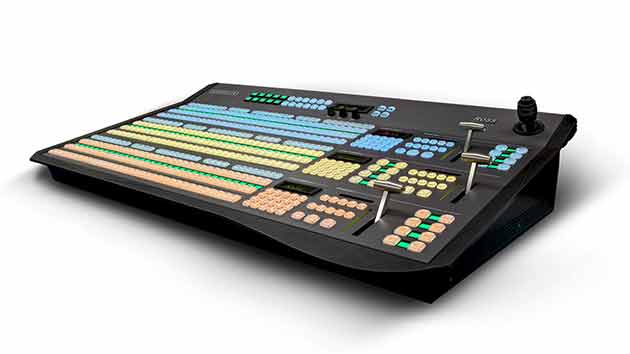Ross Video Upgrades Carbonite Switcher Users to 4K, Cisco and Sony Show 4K IP Streaming
Without a doubt, the big buzzword at NAB 2014 was, once again, 4K. While 4K (4096×2160 or higher) has been available to feature filmmakers and commercial productions for years, the broadcast industry has been relatively unaffected due to the lack of cameras and 4K consumer displays. But that has clearly changed. As leading camera manufactures and consumer television sets adopt the UltraHD format (3840×2160), the broadcast equivalent of 4k, broadcasters are scrambling to prepare for a rapid migration.

However, the transition to UltraHD isn’t just about getting some new cameras and displays. Since UltraHD is actually four times the bandwidth of a 1920×1080 signal, broadcast facilities are quickly realizing that broadcasting UltraHD means upgrading their whole infrastructure, including cabling, routing and switching systems—unless they're lucky enough to have some future-proof equipment. On Monday, Ross introduced the latest software for its Carbonite live production switcher series, enabling 4K resolution as well as higher frame rates and progressive image processing for free.
“These updates make Carbonite the perfect tool for users who want to adopt the very latest full HD progressive standard and make sure their production system investment is protected for years to come,” said Nigel Spratling, Marketing Product Manager for Ross Video. “To upgrade to 3G, users simply download the free software. Once in 3G mode, Carbonite’s MiniMEs can be used for UHD (4K) production by turning on MultiScreen mode.”
Other companies showed their UltraHD solutions, including an impressive demo from Sony and Cisco, who used the Sony F55 camera system with Cisco’s Videoscape AnyRes platform to stream live UltraHD content on the show floor. The demo was shot live from a Time Warner studio in New York, where an F55 camera was shooting 4K. The 4K broadcast was encoded by a Cisco AnyRes Live encoder at 60 fps using HEVC and delivered over an IP network to the Las Vegas Convention Center. According to Sony, this represented the first live public broadcast of 4K content over a cable backbone.
We all remember the painful migration expenses and challenges associated with the upgrade from SD to HD. Clearly, 4K or UltraHD represents the evolution of that continuing challenge. This time around, it’s refreshing to see so many manufacturers not just creating products but focusing on the workflow to provide an end-to-end solution for consumers and content providers. The next few years are sure to be loaded with many glitches and gotchas, making life interesting for those of us on the bleeding edge.
But the reward, in the end, is in seeing our sweat and hard work displayed for the masses in incredibly pristine, 4K resolution, a moment for which I can hardly wait. Especially at the start of football season.
Nathan Adams is a freelance Post Supervisor and Production Technology Consultant in Los Angeles specializing in camera to archive workflows. Nathan is the owner of Cinematomic, a popular post production company specializing in "facility free" post production for television, theatrical and web projects.

